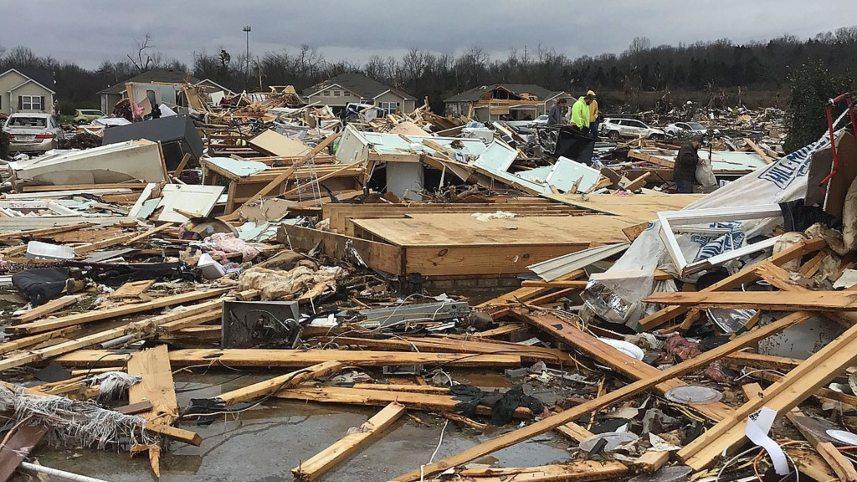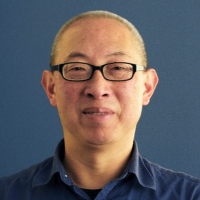On the night of December 10, 2021, tornadoes tore through eight southern and midwestern states with devastating force, leading to more than 80 reported fatalities and billions of dollars in damage. The deadliest and strongest of the tornadoes stayed on the ground in western Kentucky for nearly three hours, reaching an estimated peak wind speed of 305 kph (190 mph) and carving a path through numerous cities and towns.
Among those communities was Bowling Green, home to three of NCSE's curriculum field testers: Mary Ellen Markham, Amanda Staggs, and Jessica Newport. We spoke with the three middle school science teachers recently about their experience both as community members affected by the destructive tornadoes and as teachers helping their students better understand climate science while living through extreme weather events made more likely by climate change.
Though attributing a specific tornado to the effects of climate change is challenging, according to the National Oceanic and Atmospheric Administration, scientists agree that climate change is creating the conditions that make extreme weather events more likely. (NCSE in fact has developed a lesson set on the correlation between climate change and extreme weather, such as tornadoes, which is slated to be published in the very near future and which Markham, Staggs, and Newport are field testing this spring.)
Mary Ellen Markham
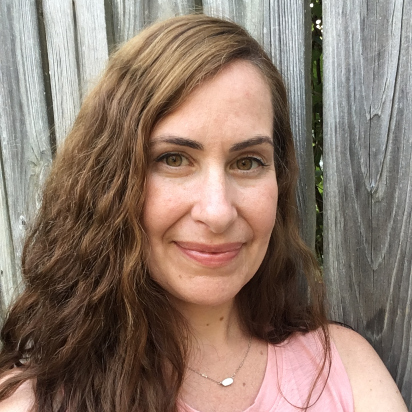
My family was awakened by the emergency sirens and took shelter during the tornado. It touched down several blocks from our home and we could hear the loud sound of the tornado moving through the area.
Classes were canceled the week after the tornadoes hit and the faculty and staff at our school focused on contacting every student, making home visits, and collecting donations and assembling donation boxes to be delivered. The response of my colleagues and the community at large to donate their time and resources was amazingly generous. Many community groups and private individuals reached out to make donations and inquire what was needed. When I drove through the destroyed neighborhoods to drop off supplies such as warm clothes, food, water, and flashlights, the destruction was shocking and heartbreaking. Seeing the destroyed homes of our students and their neighbors is something I will never forget.
When we returned from winter break, I gave my students time in each class to share their experiences and the experiences of their loved ones. Several students lost their homes and recounted stories of hiding as the destruction occurred. One student recalled that a girl's body had been missing in her area and how it was found. I couldn't help but think how deeply this tragedy will impact some of our students. Although 26 families in our district lost their homes, we were fortunate that none of our students' lives was lost. My students were very respectful when hearing the stories and experiences of their peers and their resilience shined through as they were still able to enjoy each other's company and, at times, find humor in the situation. This group of students has endured the trials of a pandemic for two years and now is enduring this devastation in our community.
In several of my classes, students repeated information they had learned that the location of "Tornado Alley" was shifting from the Great Plains eastward and more toward us. It was evident that they were interested in how tornadoes and their destruction may affect our area in the future. This will be a great source of interest when we cover topics such as climate change and natural hazards in the spring. We will adapt our teaching to cover these topics intentionally and with opportunities for students to share and reflect on their personal experiences. This way we can be responsive to their individual experiences and feelings.
Amanda Staggs
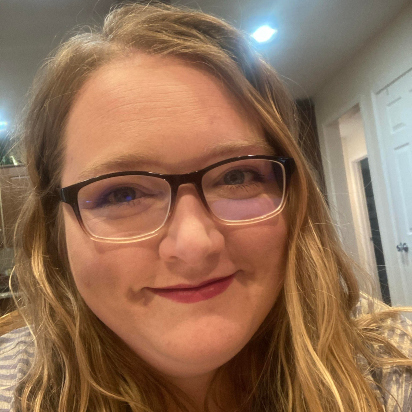
Waking up the morning after the December tornadoes, everything at my house seemed fine. Living out in the country away from town, I had no power and some small debris (sticks, trash, etc.) in my yard. As more information became available, I quickly realized that this event was much bigger and more destructive than I could have imagined. Naturally my first thoughts were with my friends and family. One of my twin daughters, age 5, had spent the night with my mom. After hearing about the tornadoes' path through town, panic set in. It turned out all my family was safe, but my mom was less than a quarter mile away from the path of destruction. A few very close friends, including my children’s long-time babysitter, lost everything.
My next focus was my students. I immediately reached out to see where to begin. The school staff spent the next few days checking on students, delivering blankets and food, and connecting families with businesses and donations. Teams went out to pack up salvageable items in houses that were in danger of collapsing. Crews with chainsaws and cleared downed trees. We were exhausted and overstimulated.
One day, during lunch, a fellow teacher commented on President Biden’s address about the disaster. “Can you believe he made it so political, commenting on climate change?” Startled, I asked for clarification. I listened as the people around me discussed the political nature of climate change. After hearing them out, I was able to redirect the conversation toward the scientific nature of climate change. I was able to discuss with the people around me how climate change was specifically involved in this event. We talked about changes in weather patterns, global warming, the increase of extreme weather events. During this conversation, I understood more than ever that the barrier to teaching climate science in a classroom isn't the science at all. It's the perception of that scientific idea being political and utilized to push an agenda.
Jessica Newport
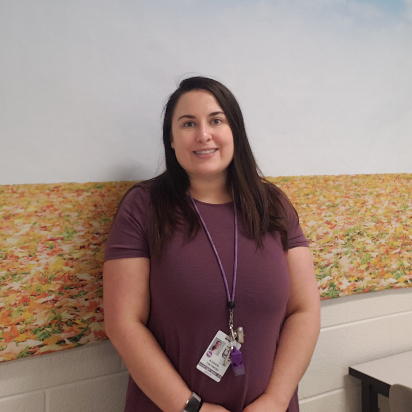
Growing up in western New York, tornadoes were never a concern for my family. Once we moved to south central Kentucky, just an hour north of Nashville, Tennessee, we became aware of the threat of tornadoes. But in almost 20 years of living in Kentucky, we’ve been very fortunate not to have experienced many tornadoes in the area — especially none as damaging as the ones on December 10. Not regularly experiencing the strong thunderstorms and horrific damage that accompanies tornadoes, I felt very safe living in this region. As a whole, this community knows that tornadoes are a possibility — we're alerted to tornado watches and warnings — but I feel as though we normally don’t take them as seriously as if we lived in the famed “Tornado Alley.”
In the aftermath of the December 10 tornado, our school district came together to check on students and families, collect donated items, and connect those in need with the resources available. Living on the opposite side of town from where the tornadoes struck, I didn’t see the destruction first-hand until Amanda Staggs and I partnered up to visit students with whom we were unable to make contact. It was a pretty tense drive, but once we arrived we realized the students we were checking on were okay. We breathed a big sigh of relief. Many had just lost phone or internet service.
As I write this, I’m on my fourth NTI (non-traditional instruction) day due to icy roadways. Throughout my years in high school and college, this region of Kentucky rarely had winter weather that required the cancellation of school. However, this year snow and ice closures have surpassed my expectations. Extreme weather events such as multiple tornadoes in one night and more frequent snow days this far south make me wonder what the new normal will be in my community.

